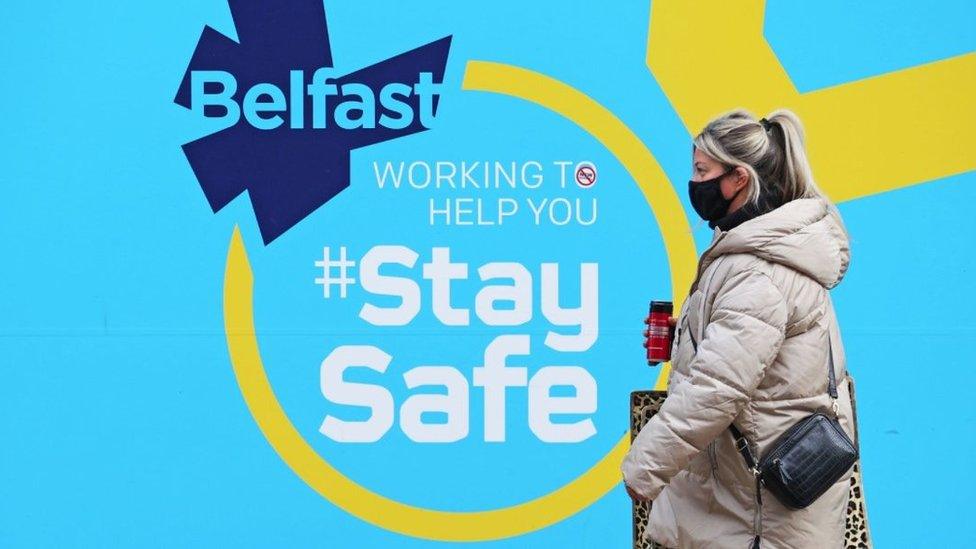Covid-19: Details of NI lockdown exit plan revealed
- Published
- comments
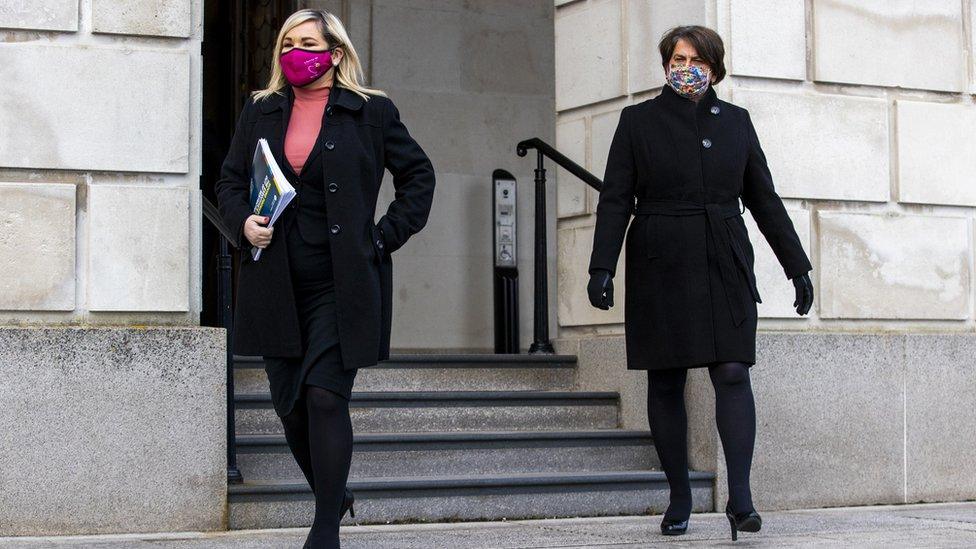
Michelle O'Neill and Arlene Foster outlined the plan at Stormont on Tuesday
Northern Ireland's plan for easing the coronavirus lockdown is "cautious and hopeful", Deputy First Minister Michelle O'Neill has said.
Unlike plans announced in England, NI's blueprint does not include a timetable.
Ms O'Neill said the executive's plan, published on Tuesday, would be an "underpinning insurance policy" to help protect the health service.
First Minister Arlene Foster said the plan was "not perfect" but added she wanted to prevent any future lockdowns.
Mrs Foster acknowledged that there is "a lot of frustration" among the public who want to know when restrictions will be lifted.
She said the executive had faced the similar questions about setting out a timetable when they lifted previous lockdowns last year, but added they had learned a lot about the virus over the past year.
Earlier on Tuesday, two more coronavirus-related deaths were recorded by the Department of Health in Northern Ireland.
The number of people in hospital with Covid-19 has dropped by 13 to 289 - the lowest number since October 2020.
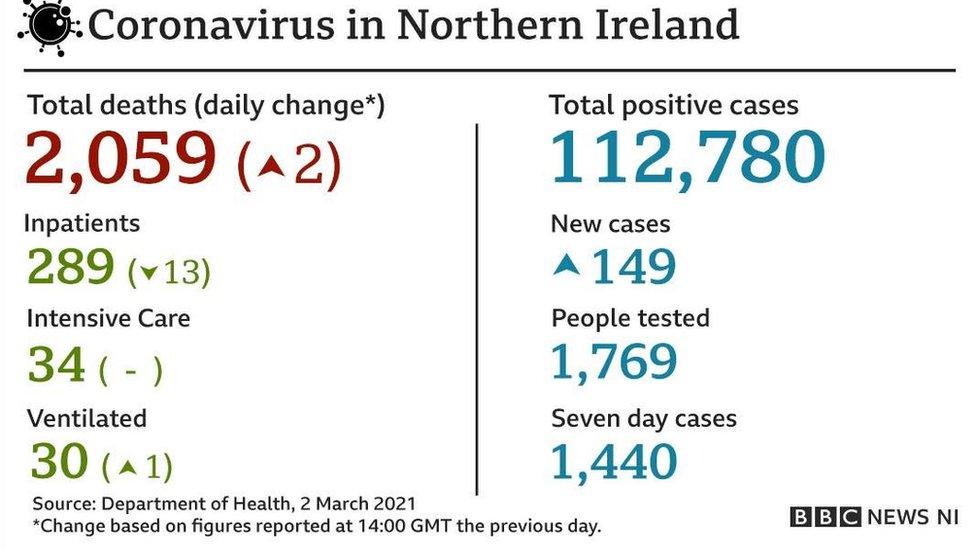
Thirty-four people with Covid-19 are being treated in intensive care.
A further 149 cases have been diagnosed.
In the Republic of Ireland, 359 new cases were confirmed on Tuesday and 14 additional Covid-related deaths were added to the overall death toll, which now stands at 4,333.
'We cannot go back'
Speaking in the NI Assembly, Ms O'Neill said: "We must do everything we can to try to make this one the last lockdown."
Mrs Foster said the public needed to work with the executive.
"What we've set out today is a pathway. It's not perfect, nobody is pretending it is, but I think it gives the direction of travel in terms of where we hope to get to because people do need to have optimism," Mrs Foster said.
"That's what I'm focused on, because we certainly cannot go back into a lockdown again."

Avoiding past mistakes

"Data, not dates" was the mantra when Arlene Foster and Michelle O'Neill first announced they were preparing a plan to help Northern Ireland exit lockdown.
But a read of the document leaves questions as to why the data ministers will base their decisions on seems largely absent from the plan.
All of this is ultimately aimed at giving the executive maximum flexibility - a pick-and-mix that will allow them to move when they believe the relevant health indicators are in the right place, assessing that with "economic and community trends".
All executive ministers know the risks - and consequences - of lifting lockdown too soon, given past experience.
For now, both the public and businesses are facing more uncertainty.
The challenge is getting people to buy into another plan that has no dates to circle in our calendars, when we are not much clearer as to when we can start looking to a future with more freedoms again.

The framework has been broadly welcomed, but the absence of dates has been criticised by many industry bodies.
Colin Neill from Hospitality Ulster said it was "disappointing to see that parts of hospitality have been earmarked to reopen after non-essential retail".
Belfast Chamber Chief Executive Simon Hamilton said not only were there no dates, "but there is no clarity about where certain health indicators need to be to move us through each of the steps".
Dr David Bruce, moderator of the Presbyterian Church in Ireland, said he hoped there could be some return to services in places of worship from Easter.
'Pause and reflect'
Outlining the details of the recovery document, Ms O'Neill said ministers recognised there was still a "huge risk" with the virus, given the potential for new variants.
The deputy first minister said that time would be used carefully to assess the data before deciding whether the next restrictions could be eased.
"Each week, departments will meet as a collective to discuss the available information and to proactively consider which next steps can be proposed to the executive," she said.
"After each step we take, we will pause and reflect, look at the data and the impacts, engage with key sectors and enable them to reopen only if it is the right thing to do."
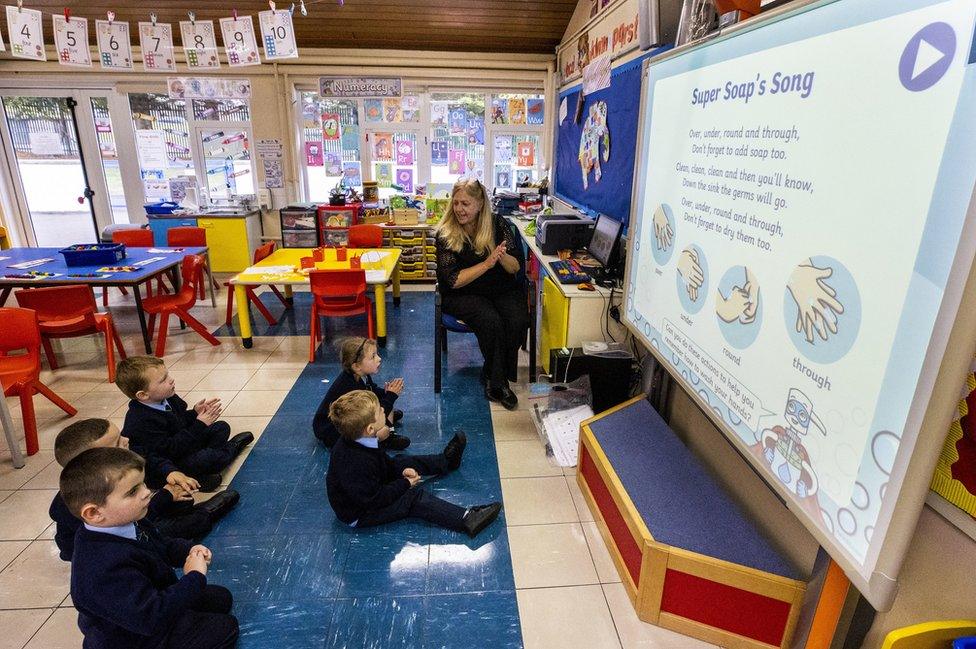
Ms O'Neill said the executive wanted to get pupils back to school as quickly as possible
However, Ms O'Neill added that the executive was committed to getting all children back into classrooms as "quickly as possible".
Mrs Foster said: "I very much hope that on 16 March we can give clarity for the rest of the school years and I would hope that, given the data, everybody can return after Easter.
"We will not be able to take that decision until we review what's happening on 16 March."
Ministers are also working on a separate recovery strategy through the executive's Covid-19 taskforce that would "jumpstart economic and societal recovery".
"We ask everyone to take time to read and digest, to think about the need for caution in our approach, to continue to follow the public health advice, and most certainly to take the vaccine when it is offered," said Ms O'Neill.
"We have hope for this year, and we will get there together."
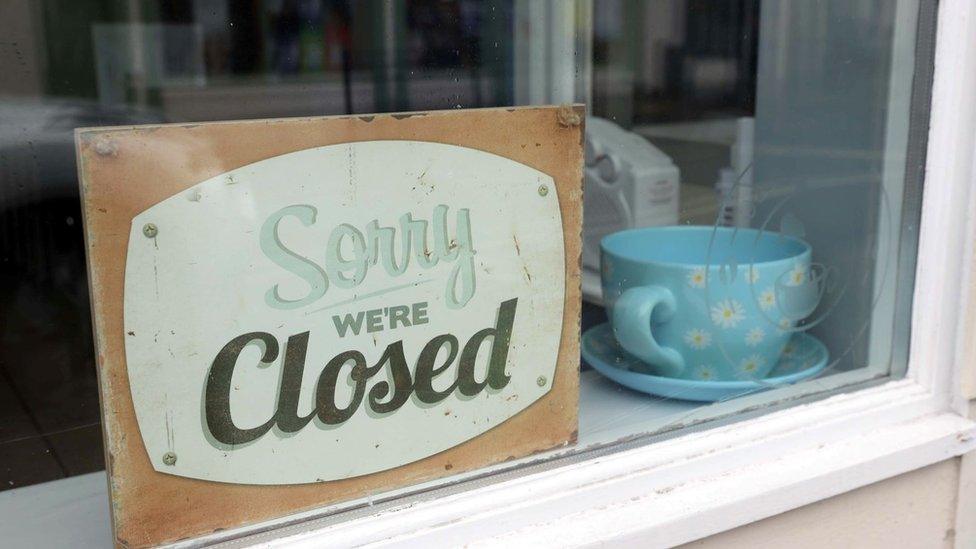
Non-essential businesses in Northern Ireland have been shut since Christmas Eve
Pathway steps
Step one of the recovery plan represents the current lockdown restrictions in place, with steps two to four allowing an easing of the rules and the final step entitled preparing for the future.
The first easements will allow changes to rules on people meeting others outdoors at their homes, changes to restrictions in places of worship and a partial return to classroom teaching.
The executive says the steps do not have to align, and the executive said it is possible "we may be in different phases across the nine pathways at any given time".

What is NI's plan for easing lockdown?
There are nine pathways set out by the executive:
Home and community
Education
Work
Retail
Hospitality
Sport and leisure
Worship and ceremonies
Travel and tourism
Culture, heritage and entertainment
The document then sets out the five-step sequencing of the executive plans to gradually lift restrictions on each of those sectors.
The factors for easing the lockdown include the infection rate of the virus, known as the R number, the number of people in hospital, vaccine rollout and progress in testing and tracing positive cases.
Read the full pathway-to-recovery plan here.

There will also be a rolling review every four weeks, in line with how the regulations are currently reviewed. The next review is scheduled for 16 March.
Ministers have said they must ensure any easing is gradual, to avoid moving out of lockdown too quickly and potentially leading to another rise in cases.
The plan will also state that keeping the R-number under one and "as low as possible" is the best way to suppress the virus.
Northern Ireland has been in lockdown since 26 December in a bid to curb cases of Covid-19, with measures already having been extended a number of times.

What questions do you have about the Northern Ireland Executive's lockdown exit plan?
We'll answer them live during Thursday's Coronavirus Catch-up and this weekend on the BBC News NI website.
Join us at 19:00 GMT on the BBC News NI website, iPlayer and BBC News NI Facebook Page.
If you are reading this page on the BBC News app, you will need to visit the mobile version of the BBC website to submit your question on this topic.

Related topics
- Published1 March 2021
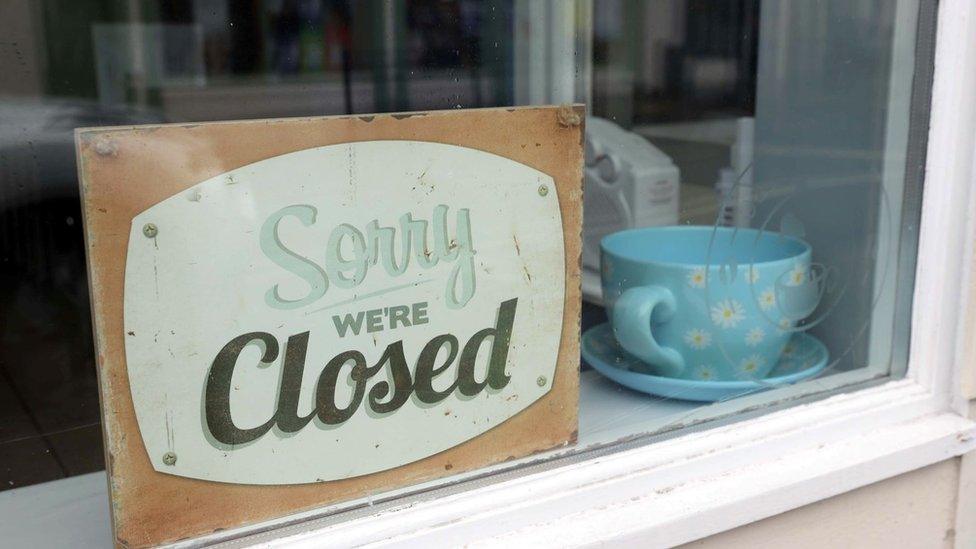
- Published26 February 2021
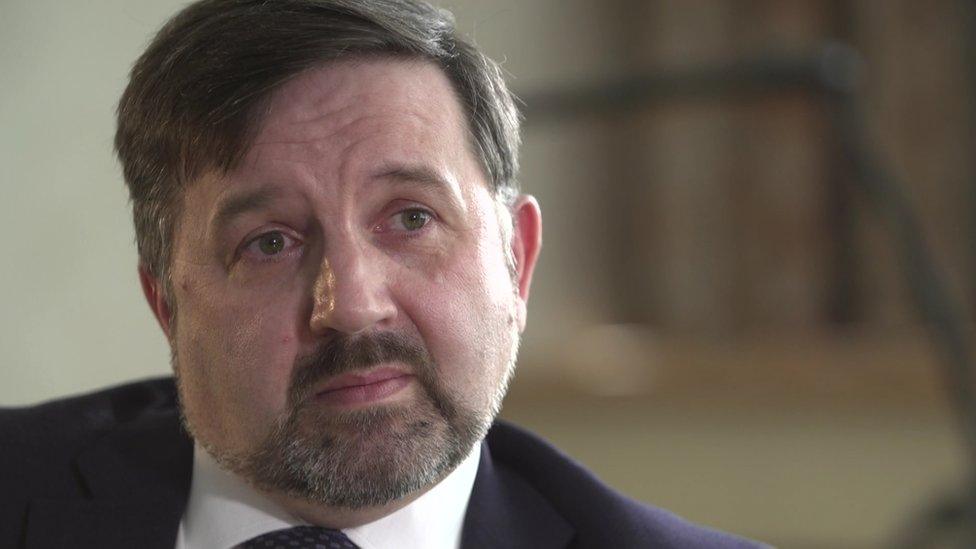
- Published19 March 2021
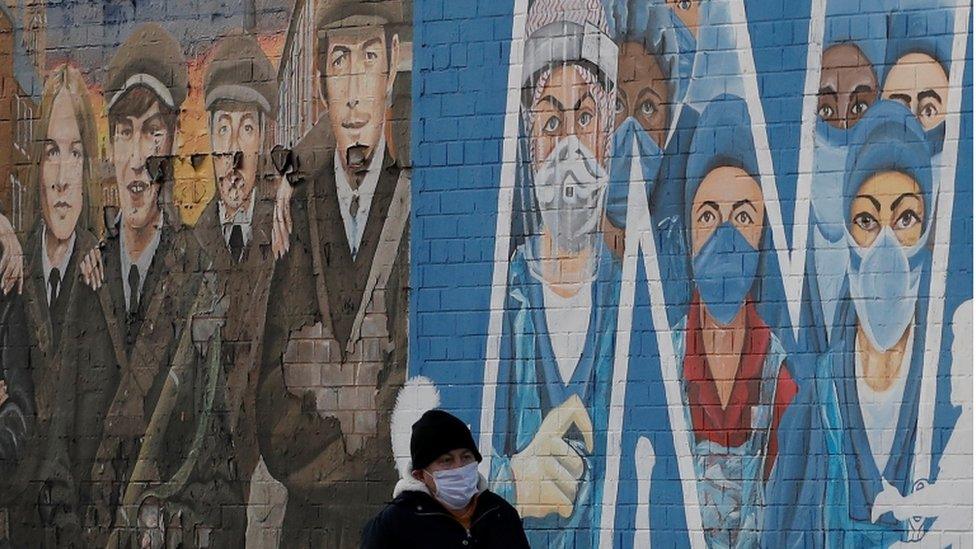
- Published18 February 2021
